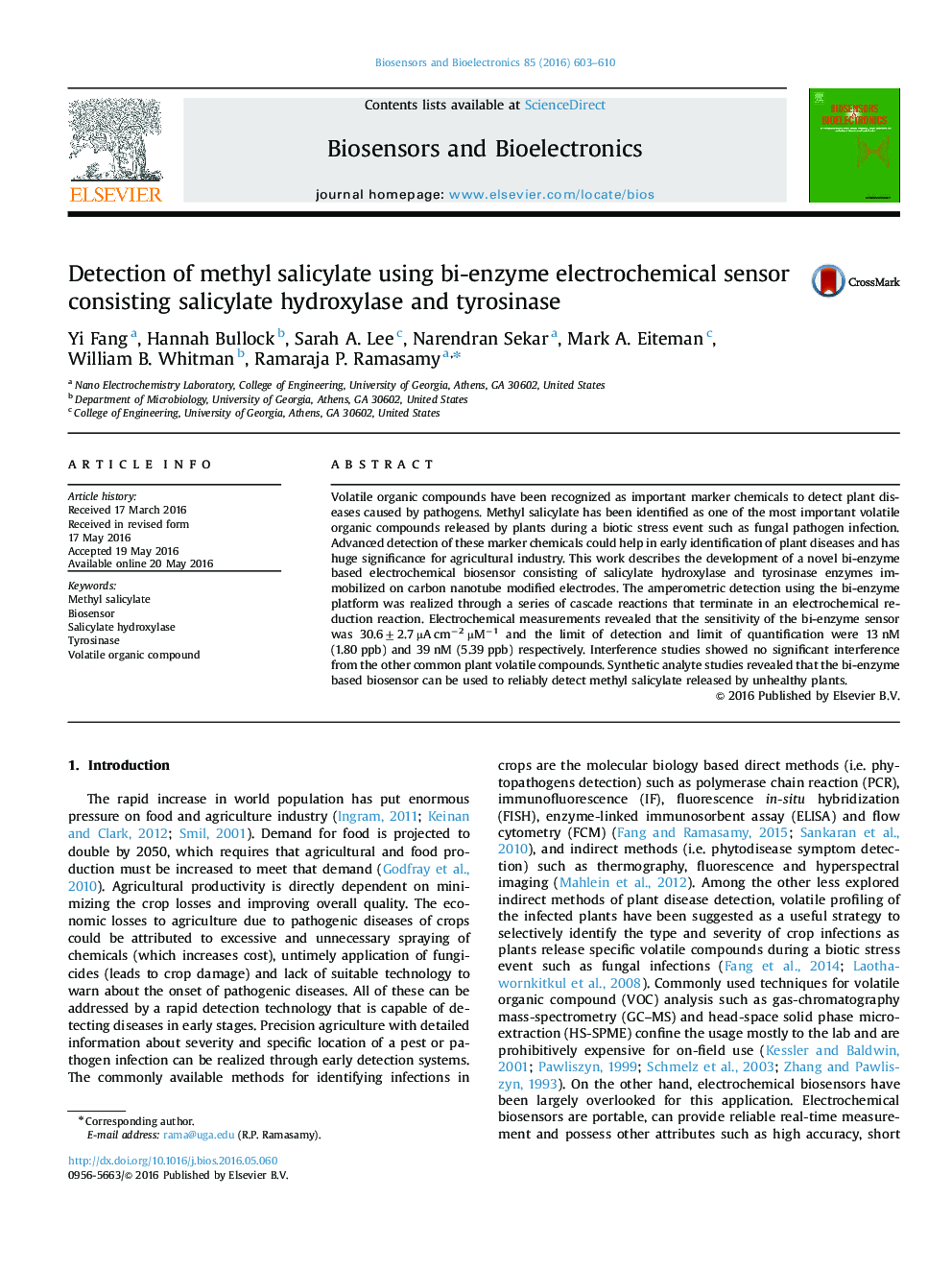| Article ID | Journal | Published Year | Pages | File Type |
|---|---|---|---|---|
| 7230453 | Biosensors and Bioelectronics | 2016 | 8 Pages |
Abstract
Volatile organic compounds have been recognized as important marker chemicals to detect plant diseases caused by pathogens. Methyl salicylate has been identified as one of the most important volatile organic compounds released by plants during a biotic stress event such as fungal pathogen infection. Advanced detection of these marker chemicals could help in early identification of plant diseases and has huge significance for agricultural industry. This work describes the development of a novel bi-enzyme based electrochemical biosensor consisting of salicylate hydroxylase and tyrosinase enzymes immobilized on carbon nanotube modified electrodes. The amperometric detection using the bi-enzyme platform was realized through a series of cascade reactions that terminate in an electrochemical reduction reaction. Electrochemical measurements revealed that the sensitivity of the bi-enzyme sensor was 30.6±2.7 µA cmâ2 µMâ1 and the limit of detection and limit of quantification were 13 nM (1.80 ppb) and 39 nM (5.39 ppb) respectively. Interference studies showed no significant interference from the other common plant volatile compounds. Synthetic analyte studies revealed that the bi-enzyme based biosensor can be used to reliably detect methyl salicylate released by unhealthy plants.
Related Topics
Physical Sciences and Engineering
Chemistry
Analytical Chemistry
Authors
Yi Fang, Hannah Bullock, Sarah A. Lee, Narendran Sekar, Mark A. Eiteman, William B. Whitman, Ramaraja P. Ramasamy,
